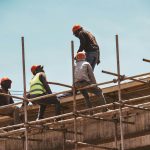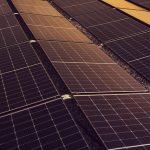In the realm of residential construction, prefabrication or modular building has gained significant attention as a viable alternative to traditional building methods. It’s a method that involves constructing sections of a building in a factory and then transporting them to the construction site for assembly. While this might sound like a novel approach, it’s an industry practice that has been around for decades. However, its popularity has seen a recent surge due to its numerous environmental and financial benefits.
How Prefabricated Construction Works and its Benefits
Understanding the process of prefabricated construction is key to appreciating its advantages. It starts with the design of the building. Instead of starting construction on-site, the design is sent to a factory where the components are manufactured. These components, also known as modules, are then transported to the site where they are assembled into a building.
A découvrir également : How to Assess the Impact of High-Speed Rail Developments on Local UK Property Values?
The benefits of this method are manifold. Firstly, it leads to a significant reduction in construction time. Since the components are manufactured in a controlled environment, it eliminates the possibility of weather-related delays. Furthermore, the construction process becomes more streamlined and efficient, leading to faster project completion. This time efficiency is not just beneficial for the construction company, but it is also advantageous for the end customer who is eager to move into their new home.
Sustainability in Prefabricated Construction
One of the main attractions of prefabricated construction is its environmental friendliness. The process is designed to be sustainable and energy efficient. Firstly, the materials used are usually sourced locally and are often recycled, reducing the environmental impact of the construction process.
Avez-vous vu cela : How Can Property Owners Utilize Solar Carports to Enhance Property Value and Sustainability?
The manufacturing process also ensures minimal waste. Any leftover materials can be recycled and reused for other projects, reducing the amount of waste that goes to the landfill. Furthermore, factories can control and reduce the amount of energy used in the manufacturing process, contributing to lower energy consumption.
Also, a well-constructed prefabricated building is typically more energy efficient than its traditionally built counterparts. The precision in the manufacturing process ensures a high level of insulation and airtightness, leading to lower energy costs for heating and cooling the building.
Cost-Effective Nature of Prefabricated Residential Buildings
The efficiency and speed of prefabricated construction translate into significant cost savings. The ability to buy materials in bulk and the streamlined construction process reduce the overall project cost. Moreover, the time saved on project completion further contributes to cost-effectiveness.
In addition, prefabricated houses tend to require less maintenance and repair over the years, which results in lower costs in the long term. Another cost advantage is the predictability of the budget. With traditional construction, unexpected costs can arise, but with prefabricated construction, you know the cost upfront, making budgeting easier.
Quality Control in Prefabrication
Prefabrication doesn’t compromise on quality. In fact, it enhances it. The components are built in a controlled environment, which eliminates the variables that can affect the quality of construction, such as weather conditions and site accessibility.
Furthermore, the manufacturing process involves rigorous quality checks at every stage. From the raw material stage to the final assembly on the site, each component undergoes thorough quality control. This ensures that every part of the building meets the highest standards of quality and safety.
The Future of Prefabricated Residential Construction
Looking at the myriad of benefits, it’s no surprise that the prefabricated construction industry seems poised for growth. Not only does it provide a cost-effective and efficient construction method, but it also aligns with the increasing global emphasis on sustainability.
With advancements in technology, we can expect the prefabrication process to become even more efficient and cost-effective. The future of residential construction appears to be modular, combining the benefits of quality, sustainability, and affordability. As scholars and industry experts continue to refine and advance the process, the potential for prefabricated residential construction is boundless.
In the era of climate change and financial constraint, the advantages of prefabricated construction are too significant to ignore. It’s a construction method that meets the demands of the current times – a method that promises sustainable, affordable, and quality residential buildings.
Advancements and Innovations in Prefabricated Construction
Digital technology and innovation continue to drive the prefabrication construction industry forward. These technological advancements have allowed for more accurate and efficient design and fabrication processes. Computer-aided design (CAD) and building information modeling (BIM) are examples of such advancements. They enable engineers and architects to create precise and detailed designs, which are then used to manufacture the prefabricated components in the factory.
The use of 3D printing in the construction industry has also been a game changer. It has the potential to revolutionize the production of prefabricated components, further reducing construction time and cost. 3D printing allows for the creation of complex and customized parts with ease. It also reduces waste, as it only uses the exact amount of material required for each component.
Robotics and automation are also making their way into the prefabrication construction industry. They play a significant role in the manufacturing process, ensuring precision and quality control. Robots can be programmed to carry out repetitive tasks, which not only improves efficiency but also reduces the risk of human error.
According to a study featured on Google Scholar, these technological advancements are expected to further improve the efficiency, sustainability, and cost-effectiveness of modular construction. The integration of smart home technology into prefabricated homes is also a trend to look out for.
Conclusion: The Implications of Prefabricated Residential Construction
In conclusion, prefabricated modules in residential construction present a range of environmental and financial benefits. They offer a more sustainable and efficient alternative to traditional construction methods, reducing waste and energy consumption. The controlled, factory-based production process ensures a high level of quality control and reduces the risk of weather-related delays, contributing to faster construction time and cost savings.
The predictability of costs in prefabricated construction, coupled with the growing trend of incorporating smart technology, also offers an added advantage. It allows homeowners to budget more accurately and enjoy the benefits of a modern, energy-efficient home.
The progress and advancements in the construction industry point towards a future where prefabricated buildings become the norm rather than the exception. The construction industry appears to be on the cusp of a significant transformation, with prefabricated construction leading the charge.
As the world continues to grapple with the challenges of climate change and financial constraints, the shift towards more sustainable and cost-effective construction methods becomes not just desirable, but necessary. The future of residential construction lies in embracing the manifold advantages of modular building – a future that promises sustainable, affordable, and high-quality homes for all.

















